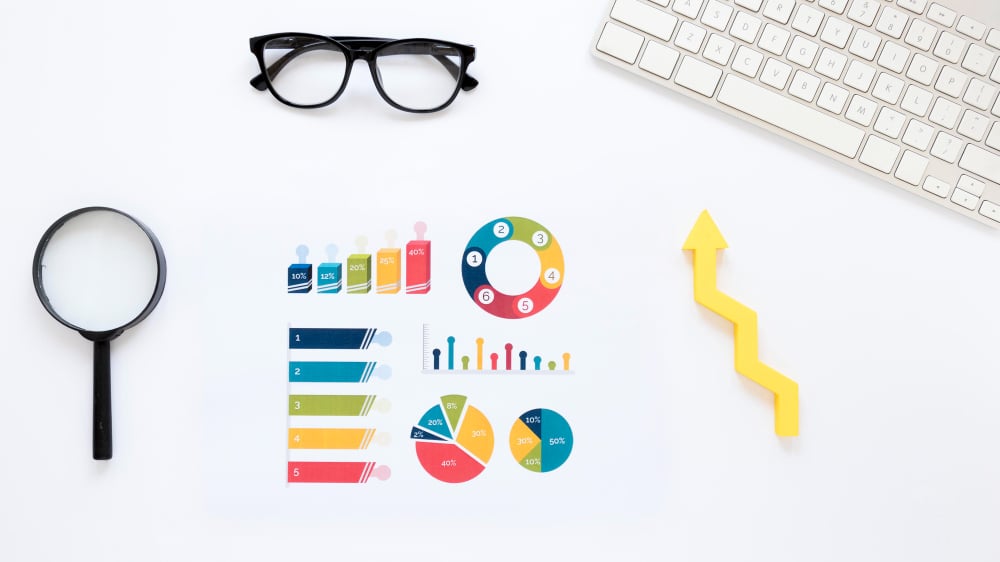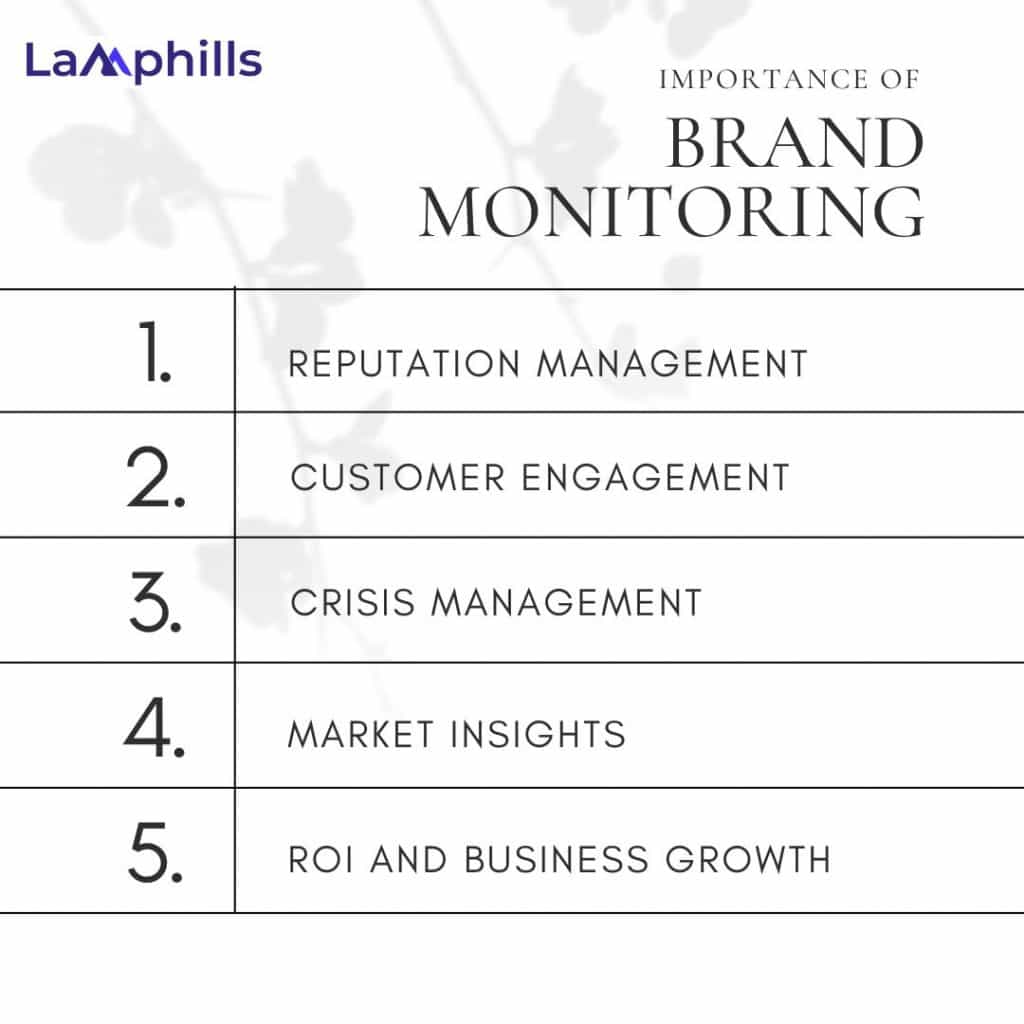Well, yeah, there’s a name for wanting to know what people say about you and your brand. I mean, it’s very necessary you know what’s going on behind the scenes so you’ll how your marketing efforts are paying off. For example, I had a client who experienced a sudden and unexpected drop in sales. They had awesome reviews and really engaging content, but a quick social media scan showed that a viral post on a popular tech forum criticized their customer service. That single post gained a lot of impressions and, if not for timely intervention, would have ruined the entire business. That social media scan is an example of brand monitoring, and it’s a very effective way to understand the impression your brand makes on people. In this article, I’ll share what brand monitoring is, why it’s important, and how you can implement it effectively to protect and grow your brand.
Key Points
- Brand monitoring involves tracking various channels to see where your brand is mentioned, what’s being said, and the overall sentiment behind these mentions/
- Components of brand monitoring include social media monitoring, web monitoring, review monitoring, and competitor monitoring.
- You can use several tools for brand monitoring: Ahrefs, Hootsuite, Google Alerts, BuzzSumo, Meltwater, Youscan, X Pro, etc.
Understanding Brand Monitoring
Brand monitoring involves tracking various channels to see where your brand is mentioned, what’s being said, and the overall sentiment behind these mentions. It’s about keeping your finger on the pulse of public perception and engaging with your audience where they are. Knowing where and how people are talking about your brand will help you better understand how people perceive it, and lets you collect valuable feedback from your audience. You can also keep an eye on potential crises and respond to questions or criticism before they get out of control and protect your brand’s reputation.
Components of Brand Monitoring

Brand monitoring can occur in different forms, which include:
#1. Social Media Monitoring
This includes tracking mentions, hashtags, and comments across platforms like Twitter, Facebook, and Instagram. I remember setting up alerts for one of my clients who was launching a new product. The real-time feedback we gathered was invaluable for tweaking our marketing strategies.
#2. Web Monitoring
This involves keeping an eye on blogs, news sites, and forums. For instance, I use tools that scan the web for any mention of my clients’ brands, which helps in identifying any PR issues early.
#3. Review Monitoring
Platforms like Yelp, Google Reviews, and TripAdvisor can significantly impact your brand’s reputation. Regularly checking and responding to reviews can turn a negative experience into a positive one.
#4. Competitor Monitoring
Understanding what’s being said about your competitors can give you insights into market trends and opportunities for differentiation. I often use this to advise clients on how to position their brands more effectively.
Importance of Brand Monitoring

Brand monitoring can help your brand in many ways:
#1. Reputation Management
Brand monitoring is important for maintaining and enhancing your brand’s reputation. For example, during a campaign, I noticed a spike in negative comments about a client’s product. By addressing these issues promptly, we managed to change the narrative and even gained some loyal customers.
#2. Customer Engagement
Engaging with your audience when they talk about you can foster a stronger connection. I once handled a situation where a customer tweeted about a defective product. By responding quickly and offering a solution, we not only retained the customer but also gained positive exposure.
#3. Crisis Management
One of the most significant benefits of brand monitoring is that it helps you detect potential PR crises early. I recall a situation where a misunderstanding about a client’s policy led to a backlash. Because we were monitoring mentions in real time, we could issue a clarification promptly, mitigating potential damage.
#4. Market Insights
Brand monitoring provides valuable insights into customer preferences and market trends. This data is instrumental in making informed business decisions. For instance, feedback gathered through monitoring helped a client pivot their product features to better meet customer needs.
#5. ROI and Business Growth
Effective brand monitoring can lead to increased customer satisfaction and loyalty, ultimately contributing to business growth and a higher return on investment.
Strategies For Effective Brand Monitoring
#1. Setting Clear Objectives
What do you hope to achieve with brand monitoring? You must first answer this question before carrying out any plan. Whether it’s improving customer service, enhancing your brand image, or gaining market insights, having clear objectives will guide your efforts and set you on a clear path.
#2. Choose the Right Tools
Select tools based on your objectives and budget. I prefer using a combination of tools to comprehensively cover different aspects of brand monitoring.
#3. Defining Metrics
Identify key performance indicators (KPIs) to measure the effectiveness of your monitoring efforts. Metrics might include sentiment analysis, engagement rates, and the volume of mentions.
#4 Create a Monitoring Plan
Develop a plan outlining the frequency of monitoring, platforms to track, and team roles. In my experience, having a structured plan ensures consistency and effectiveness.
#5. Analyzing and Reporting
Regularly analyze the data collected and create actionable reports. This helps in understanding trends and making informed decisions. I make it a point to review these reports with my clients to align our strategies accordingly.
Tools Used for Brand Monitoring
Some popular brand monitoring tools include Google Alerts, Hootsuite, Brandwatch, and Mention. Each tool has its strengths, and selecting the right one depends on your specific needs and budget. Here’s an overview of some effective brand monitoring tools:
#1. Hootsuite
Beyond social media post scheduling, Hootsuite has a few useful functions for brand monitoring on social media. You can create custom streams and view what other people are posting on subjects that matter to you. Additionally, it puts you “in” on conversations that will increase your brand exposure.
When customers on social media reach out directly, you can be ready to respond via a centralized inbox. This inbox brings all your DMs to one place, so you never miss an opportunity to impress.
#2. Ahrefs
Ahrefs is primarily an SEO tool, and it may say a lot about the state of your brand as a whole. Getting backlinks from other websites is a little part of the much bigger branding picture. These backlinks can occasionally be the result of your diligent work. Sometimes they occur naturally. You have no control over the anchor text or the context in which third parties link to you when you receive unsolicited backlinks. These are important details to be aware of since they affect how others perceive your brand.
Ahrefs keeps track of every backlink profile you have so you can see who links to you, what anchor text they use, their domain authority, and others.
Since it’s an SEO tool, you can also track keywords and organic rankings and how these change over time. If you notice a decline in rankings, you can pair this with other brand-related data, such as customer sentiment analysis, to see if the decline indicates a brand image issue or something else.
#3. Google Alerts
Google Alerts tells you if people talk about your brand beyond social media. This simple yet essential tool is a great way to step into the world of brand monitoring tools. All you have to do is set up an alert for a keyword of your choice and then receive emails showing where that keyword was mentioned in online publications.
Your keywords can be brand-related (e.g., your brand name, the name of a product, a brand nickname), competitor-related, or industry-related. You’ll receive an email of where content about your keywords is being published so you can see who is talking about your brand and how they’re positioning it.
Use these opportunities to make new media contacts and keep positive conversations going. Or find out if someone is pushing a negative agenda so you can respond accordingly.
#4. Meltwater
Meltwater gives organizations an overall view of their brand’s presence. You can see everywhere your brand is present, from social media to blogs, podcasts, and news channels, and you can leverage this information to strengthen your brand.
Businesses rely on Meltwater’s media intelligence for up-to-date information and practical insights. Meltwater uses data science and brand monitoring to assess results and explain the meaning and significance of the data.
Additionally, you can detect changes in sentiment fast and respond appropriately if your brand becomes the subject of negative internet discussion. Meltwater assists businesses in moving forward so they can lead the conversations, disrupt false information, and protect their public image.
Along with brand monitoring, Meltwater also serves as a brand tracking software so you can see how your efforts pay off over time.
#5. BuzzSumo
With BuzzSumo, you can set up keyword alerts and respond when people talk about your brand.
Keyword alerts are helpful with brand monitoring and tracking competitors, industry news, and products or services related to your own. You can also receive alerts when new content is posted on websites or by authors you’re tracking.
If you find that content about your brand is being posted, you can go to your personalized dashboard to see the content’s popularity. View how many times it’s been shared on various social media channels. If the content might bring negative publicity, gauging its popularity can show you whether there’s a real threat you need to address.
#6. YouScan
YouScan helps with brand monitoring, competitor analysis, market research, as well as trend detection. In terms of brand monitoring, YouScan aims to understand what people are saying online about a brand and pinpoint what exactly makes them happy or dissatisfied.
Aside from monitoring social media and other text-based content, YouScan’s AI capabilities can analyze logos, images, and other visuals. This helps brands maintain a consistent image across channels (e.g., using the right logo or creative), as well as keep tabs on competitors to see how they’re using visuals to talk about their brands.
#7. X Pro
Formerly known as TweetDeck, X has reinvented this brand monitoring tool to fit alongside Twitter’s new brand and image. If your brand is active on X, this tool is a must for growth and brand management.
One of its most notable features is the ability to track and monitor hashtags. This is especially helpful during live events as you contribute to a growing conversation. You can also track other non-branded hashtags to see how they’re gaining or losing share of voice.
Read Also: How To Measure Brand Awareness: KPIs To Look Out For
#8. Google Analytics
Another home-run brand monitoring tool, Google Analytics, can offer valuable insights about your brand. First and foremost, as a website analytics platform, you can track how traffic patterns change over time. This can help you understand how consumer interest in your brand evolves and whether you’re reaching the right audiences.
Beyond the basics, Google can show you where your traffic is coming from (especially referral sources). Traffic sources can give you valuable insights into which websites or platforms are driving the most brand awareness for your business. From there, you can tailor your marketing efforts to capitalize on high-performing channels.
There’s also the number of referrals to consider. If you lose a large number of backlinks or you’re losing them faster than you’re gaining them, it might be worthwhile to find the root cause. Maybe it’s a change in consumer sentiment, or it could be the start of a much larger crisis that needs quick action.
Challenges in Brand Monitoring
#1. Information Overload
The vast amount of data can be overwhelming. That’s why filtering out the noise and focusing on relevant information is important. I often customize alerts and reports to manage this effectively.
#2. Negative Feedback
Handling negative mentions can be challenging, but it’s crucial. Acknowledge the issue, respond professionally, and offer solutions. This approach has helped me turn many unhappy customers into brand advocates.
#3. Keeping Up with Changes
Trends change rapidly, and keeping up with these changes can be quite overwhelming. But it’s important to stay updated with new platforms and changes in algorithms as fast as possible. Make it a point to regularly update your information and adjust your strategies accordingly.
Best Practices for Effective Brand Monitoring
#1. Proactive Approach
Be proactive rather than reactive in monitoring and responding to brand mentions. This approach helps in building a positive brand image over time.
#2. Consistent Monitoring
Regular and consistent brand monitoring is key. Set up daily or weekly routines to keep track of mentions and sentiment.
#3. Engaging with Audience
Engage with your audience genuinely and promptly. This fosters loyalty and can turn casual customers into brand ambassadors.
#4. Integration with Marketing Strategy
Align brand monitoring with your overall marketing and branding strategies. This ensures a cohesive approach and maximizes impact.
How Do You Monitor Brand Identity?
To monitor brand identity effectively, utilize social media listening tools like Hootsuite and Brandwatch to track mentions and sentiment. Gather customer feedback through surveys and reviews, and analyze brand sentiment to understand public perception. Conduct competitor analysis to benchmark your brand against others. Employ web analytics, such as Google Analytics, to monitor online engagement and traffic sources. Regularly audit your brand’s visuals and messaging for consistency across all platforms, ensuring alignment with your brand values and identity.
What Content Should Brands Monitor?
Brands should monitor social media mentions, customer reviews, competitor activity, industry news, brand reputation, influencer collaborations, product feedback, marketing campaign performance, SEO rankings, website analytics, and customer service interactions.
What Is Online Brand Monitoring?
Online brand monitoring involves tracking and analyzing online mentions of a brand across social media, news sites, blogs, and forums to manage reputation, understand customer sentiment, identify trends, and respond to feedback promptly. It helps businesses maintain a positive public image.
How To Monitor Brand Value?
Monitor brand value by analyzing financial metrics (revenue, profit margins), market share, brand awareness surveys, customer loyalty and satisfaction scores, social media sentiment, brand equity models (e.g., Interbrand, BrandZ), and competitive benchmarking.
In Conclusion
Brand monitoring is vital for any business looking to maintain a positive reputation, engage with customers, and gain valuable market insights. By implementing effective brand monitoring strategies, you can protect and grow your brand in the ever-evolving digital landscape. So, start monitoring today and see the difference it makes for your business.
Related Articles
- Brand Advertising: Elevating Your Brand Awareness
- What Is Brand Integrity: Why Is It Important to a Company? 5 Key Reasons
- How To Build & Measure Brand Affinity: The Ultimate Guide
- How To Measure Reach: Effective Tools and Strategies






